- “Development of high-tech technologies for deep processing of agricultural raw materials in order to expand the range and output of finished products from a unit of raw materials, as well as reduce the share of waste in the production of products.”
Head of the project: Chomanov U.Ch., Doctor of Technical Sciences, Professor, Academician of the Academy of Agricultural Sciences of the Republic of Kazakhstan.
A strategically important state task, for which a program has been developed.
Kazakhstan is one of the largest producing countries of agricultural raw materials in the world. The President of Kazakhstan K. Tokayev in his message to the people of the Republic of Kazakhstan “Constructive public dialogue – the basis of stability and prosperity in Kazakhstan” paid special attention to the agro-industrial complex. The Message says that it is necessary to move away from the raw-material orientation of the export of agricultural products, which has reached 70%, while processing enterprises are loaded with only 40%. Also, at an expanded government meeting held on January 24, 2020, the Head of State also noted that the share of processing in the total agro-industrial complex is only a third, therefore, it is necessary to create all conditions for the development of processing of raw materials within the country. At the same time, Prime Minister Askar Mamin stressed that in the coming years in the agro-industrial complex of Kazakhstan, the focus will be aimed at stimulating deep processing of agricultural products.
The efficiency of agriculture depends on agro-processing, as it creates demand for agricultural products and increases its added value. Kazakhstan has a huge raw material base for processing, as well as for deep processing of crop and livestock raw materials. A strategically important state task for the solution of which a program has been developed is the need to increase the depth of processing of agricultural raw materials, the involvement of secondary resources in the economic circulation, which will increase the yield of finished products per unit of processed raw materials, and reduce the share of waste in the production of agricultural products. The production of processed products of agricultural raw materials with high added value is the most important direction in the development of the processing industry.
Executors of the program:
- Kazakh Scientific Research Institute of Processing and Food Industry LLP (KazSRIPF LLP);
- Semey branch of Kazakh Scientific Research Institute of Processing and Food Industry LLP (SB “KazSRIPF” LLP);
- Astana branch of “Kazakh Research Institute of Processing and Food Industry” LLP (AB “KazSRIPF” LLP);
- Non-commercial JSC” Kazakh National Agrarian Research University”(Non-commercial JSC “KazNAIU”);
- Kazakh Scientific Research Institute of Animal Husbandry and Feed Production LLP (“KazSRAHFP” LLP);
- North Kazakhstan Scientific Research Institute of Agriculture LLP (NorthKazSRIA LLP) ;
- Non-commercial JSC “Shakarim University of Semey”;
- JSC ” Kazakh University of Technology and Business “(JSC “KazUTB”).
Key words characterizing the industry and the direction of the program for the selection of independent experts.
Technology, standards, Halal standards, deep processing, meat products, canned food, horse meat, beef meat, lamb meat, goat meat, poultry meat, secondary raw materials, royal jelly, dietary supplement, alcoholic, non-alcoholic, phyto drinks, products slaughter, fruit and vegetable products, pectin, snacks, tea drinks, walnuts, waste, grain “milk” drinks, Omega-3, sprouted grain, compound feed, feed additive, sheepskin, milk whey, melons and gourds, baby food.
General concept of the program.
The idea of the program is to develop science-intensive technologies for deep processing of agricultural raw materials in order to expand the range and yield of finished products from a unit of raw materials, as well as reduce the share of waste in production, maximize the use of the raw material potential of secondary products of poultry slaughter (chicken legs, heads, meat and bone residue ), Cattle (bile, internal fat, intestinal raw materials, blood, category II by-products, bone, skin trimmings, etc.), secondary products of the sugar industry (sugar beet pomace), waste of melons and gourds processing (peel, seeds), walnut ( shells) in the production of food and animal feed.
As part of the implementation of the scientific and technical program and in order to accelerate the development of new high-tech technologies, it is planned to create demonstration sites with modular production lines for working out the modes of technological processes of production, developing pilot batches of products and preparing recommendations for their development by production, in particular: experimental production of directly squeezed fruit and vegetable juices enriched with pectin extract, a production and experimental workshop for the production of vegetable milk, a modular mini-line for the production of feed for agricultural animals, an experimental production line for the processing of watermelon and pumpkin, a production and experimental workshop for the production of grain ” milk drinks, enriched with Omega-3, mini-lines for working out technological modes of production of non-alcoholic and low-alcohol phyto-drinks.
Development of innovative technologies for the processing and storage of crop and livestock products in order to expand the range and yield of finished products from a unit of raw materials, as well as reduce the share of waste in production.
Objectives of the program.
The program ensures the development, production and application of science-intensive products and is a set of innovative scientific and technical projects united by a common goal, topic, deadline and financing mechanism. The main objectives of the Program are the development of technologies for competitive science-intensive products; development of research teams capable of conducting work at all stages of the innovation cycle – from fundamental, exploratory research to organizing the production and replication of competitive science-intensive products, training personnel for specific newest scientific results; creation of an infrastructure to support the innovation activities of the institute.
To obtain competitive science-intensive products, it is necessary to solve the following specific tasks of the Program (these tasks of the Program are adopted as sixteen scientific projects of the Program):
1) Development of technology for export-oriented new types of meat products and canned goods from horse meat, beef, lamb, goat meat and poultry meat using plant materials and new food ingredients;
2) Development of a resource-saving technology for processing secondary raw materials of cattle and poultry in the production of functional meat products;
3) Development of a technology for the rational processing of secondary raw materials released during the slaughter of poultry in order to obtain meat-containing combined canned goods;
4) Development of technology for the production and processing of royal jelly for the food industry;
5) Development of technology and recipes for non-alcoholic phyto drinks based on honey and ginger;
6) Development of a draft standard for slaughter products (bile, internal fat, intestinal raw materials, etc.) in accordance with international standards for the production of export-oriented products;
7) Development of technology for obtaining fruit and vegetable jams, purees, juices from fruits and vegetables (apples, carrots, beets), enriched with pectin extract from secondary raw materials of the sugar industry;
8) Development of technology for the production of fruit, berry and vegetable snacks, tea drinks from local raw materials for a healthy diet;
9) Use of non-traditional types of walnut waste in order to obtain a prophylactic product;
10) Development of technology for grain “milk” drinks, enriched with Omega-3-polyunsaturated fatty acids;
11) Development of technology for the production of functional drinks based on sprouted grain;
12) Development of domestic technologies for the production of compound feed for agricultural and unproductive animals and poultry;
13) Development of a resource-saving technology for processing secondary meat raw materials for slaughter animals to obtain a feed additive of animal origin;
14) Development of a new technology for processing sheepskins using milk whey in order to improve their quality;
15) Development of equipment and technology for storage and complex and deep processing of melons and gourds (watermelon, pumpkin, etc.) for the production of concentrates for juices and baby food (puree), confectionery;
16) Development of technologies for processing agricultural raw materials using Halal standards.
Patent information search and analysis of literature on the processing of agricultural raw materials using Halal standards will be carried out. A patent research report will be prepared.
Normative and technical documentation will be developed for the production of animal raw materials (camel, mare’s milk) using Halal standards.
Results achieved.
1.2 recipes have been developed for export-oriented new types of meat products and canned meat from horse meat, beef, lamb, goat meat and poultry meat using plant materials and new food ingredients. The resulting product is balanced in fat, amino acid, vitamin composition and microelements, and also has high organoleptic characteristics in comparison with the control sample.
2.A patent search was carried out and the level of scientific developments on the technology of rational processing of secondary raw materials of poultry and its use in the production of meat products was studied. The complex processing of raw meat and bone is proposed to obtain meat and bone paste. The proposed technology for producing meat and bone paste from bone products of poultry and cattle differs from existing ones due to a complex scheme for processing meat and bone raw materials, including stage-by-stage grinding with freezing and subsequent processing to obtain a finely dispersed meat and bone paste, suitable for use for food purposes as food additives.
According to the content of toxic elements in meat and bone paste from poultry and cattle, critical values of the level of lead and arsenic were not revealed. The content of toxic elements in meat and bone paste complies with food safety standards. The resulting meat and bone paste from meat and bone raw materials from poultry and cattle is a valuable source of minerals. The production of combined meat products with the addition of meat and bone paste to the recipe improves the nutritional value of the final product.
3.A patent information search and analysis of the literature on the processing of secondary raw materials released during the slaughter of poultry were carried out. The total content of protein, fat and minerals, heavy, toxic metals, radionuclides in the secondary raw materials of poultry slaughter products has been determined. The results of the study of secondary poultry products showed that the concentration of heavy metals in the analyzed samples does not pose a great danger and is suitable for consumption. According to the results of the analysis, it can be concluded that the content of lead, arsenic, cadmium and mercury was not found in the samples.
A method for obtaining protein-mineral mass from secondary products of poultry slaughter has been developed. The method of obtaining protein-mineral mass consists of several stages. The influence of mechanical and biotechnological processing on the structural and mechanical, functional and technological characteristics and microstructure of the protein and mineral additive has been investigated.
4.Patent information search and analysis of literature on the production and processing of honeybee royal jelly were carried out. The most effective technology for the formation of a family-educator in obtaining royal jelly in the field for nomadic apiaries has been developed – the formation of a family-educator in a hive bed without orphanage. The number of larvae taken for upbringing was 36% higher than in the first method (with complete orphanhood) and by 18% than in the second (with partial orphanhood).
5.A patent information search and analysis of literature on the production of non-alcoholic and alcoholic products based on honey and ginger were carried out. Work was carried out to organize a mini-line for working out the technological modes of production of the developed formulations of non-alcoholic and alcoholic phyto drinks based on honey and ginger.
6.The analysis of existing technologies in the production of secondary raw materials in accordance with international standards. When analyzing existing technologies in the production of secondary raw materials, the processing technology of slaughter products was studied in accordance with international ECE / TRADE / C / WP.7 / 2008/21 and interstate GOST 33102-2014, GOST 33790-2016, GOST 25292-2017 standards, TU 9218- 877-00419779-06, ITS 43-2017.
Research has been carried out to meet the requirements of international standards for the conservation of slaughter products. During the research, the international standard ECE / TRADE / C / WP.7 / 2008/21 www.unece.org / trade / agr / standard / meat / meat e.html was studied. for the processing of intestinal raw materials.
7. A patent information search and analysis of literature on the production of fruit and vegetable jams, purees, juices from fruits and vegetables (apples, carrots, beets), enriched with pectin extract from secondary raw materials of the sugar industry, were carried out. For the development of technology for the production of jam, puree and juices with functional, bio-ecological and natural health-improving properties, 4 regionalized apple varieties were selected, Golden Delicious, Star-krimson, Idared, Zarya Alatau, 2 – carrot varieties: Alau “,” Shantane “, 2 – varieties of beets:” Bordeaux “, Kyzyl-Konyr”, 1 variety of plums: “Stanley” and 2 varieties of currants: “Golden”, “Altai”. The physicochemical properties of zoned varieties of fruits and vegetables (beets, carrots, apples) have been studied for the development of technologies for the production of juices, purees, and jams.
8.A patent information search was carried out, as well as an analysis of the literature on the production of fruit, berry and vegetable snacks, tea drinks. The selection of domestic fruit and vegetable raw materials and plant extracts with a high content of biologically active substances (vitamin C, carotenoids, tocopherols, pectin substances, bioflavonoids, etc.) has been substantiated. Innovative recipes and technologies have been developed for the production of snack products based on grain, fruit, berry and vegetable raw materials, an assessment of the organoleptic and physicochemical indicators of laboratory batches of new types of snacks has been given.
9.The analysis of technologies for processing waste of oilseeds has been carried out. The physical and chemical properties of walnut waste have been studied.
10.A patent information search and analysis of the literature on the production of herbal “dairy” drinks were carried out. The choice of the main raw materials and fillers has been substantiated and carried out. The following breeding varieties have been selected: oats varieties “Duman”, “Arman”, “Bitik”; rice varieties “Syr Syluy”, “Aykerim”, “Marzhan”; buckwheat varieties “Shortandinskaya”, “Batyr”, “Saulyk”. Studied and analyzed and selected the main method of production of new products.
11.Analysis of technical and technological solutions for the production of functional drinks from sprouted grain. The analysis of the current state of the market for juices, non-alcoholic and alcoholic beverages, extracts and functional drinks. The classification of drinks and their nomenclature has been established. Analysis of the existing market for functional products, selected groups of drinks, producers of production volumes, exports and imports, as well as the range of domestic products, are presented in the form of an analytical review.
An application has been prepared for obtaining a patent of the Republic of Kazakhstan for the invention “Method for producing functional drinks from germinated grain”. The sampling of grain of cereals, legumes and oilseeds of domestic selection was carried out; also a brief analysis of the characteristics of the research objects.
12.A patent information search and analysis of the literature on the production of compound feed for agricultural and unproductive animals and poultry was carried out. Developed 2 recipes for feed additives from sugar production waste for dairy cattle. 5 recipes for complete dry food for unproductive animals have been developed (2 recipes for puppies 2 and 4 months old, 2 recipes for adult economy and premium dogs, 1 recipe for a cat). Developed 5 pilot lots of complete dry feed for unproductive animals.
13.An analytical review and patent information search on the use of the feed additive have been prepared. The physicochemical properties of the components used to obtain a feed additive of animal origin have been determined.
14.Conducted patent information search and analysis of literature on the technology of sheepskin processing. The analysis of existing preservatives and antiseptics for canning sheepskin was carried out. A preservative and an antiseptic have been selected, a preservative composition has been developed, an antiseptic has been selected, a new curing composition has been developed.
15.A patent information search and analysis of literature on the complex and deep processing of melons and gourds were carried out. The qualitative indicators of watermelon and pumpkin have been investigated. Studied the vitamin composition in the seeds of these melons and gourds.
16.A patent information search and analysis of the literature on the processing of agricultural raw materials using the Halal standards was carried out. A package of normative and technical documentation has been developed using Halal standards for the production of functional products based on camel and mare’s milk, including: organization standard for pasteurized mare’s milk and pasteurized camel milk; technological instructions for production.
As part of the planned research, a selection of mare’s milk was carried out in private peasant farms in the Almaty and Zhambyl regions. Research has been carried out on organoleptic, physicochemical and safety indicators of mare’s milk. The results of the study of safflower oil showed that the data on the fatty acid composition of the sample of safflower oil correlate well with the literature data, which indicates the high accuracy of the studies.
Agreements have been concluded for the development of mutually beneficial cooperation in the field of science and production with meat processing, fruit and vegetable, animal feed, beekeeping enterprises, enterprises for the production of drinks: – ETBASY LLP, Almaty, Sauap LLP, Semey, PC SPK MED KZ “, Almaty region, IE” Nurdinov Sh.S. “, Almaty, LLP” Bio elite “, Almaty region, Karasai district, LLP” Ak-mol RK “, Nur-Sultan, LLP” Akbidai Astana ” , Nur-Sultan, LLP “Su kyrlys onimderi”, Akmola region, Zerendinsky district, FE “My family”, Almaty, JSC “AsiaAgroFood”, Almaty olast, Karasai district, LLP “GoldenFish.kz”, Almaty region , Talgar district, IP “Alma”, KH “Aktukan”, Zhambyl region, Turar Ryskulovsky district, IP “Duisenbekov A.S.”, Taraz, LLP “Dostar May”, Semey, LLP “LF Company” Zhambyl region.
As part of the implementation of the scientific and technical program, it is planned to create a modular experimental production of directly squeezed fruit and vegetable juices enriched with pectin extract, an experimental production line for the processing of watermelon and pumpkin, a modular mini-line for the production of mixed feed for agricultural animals, a production and experimental workshop for production of grain “milk” drinks, enriched with Omega-3, mini-lines for working out technological modes of production of developed phyto drinks recipes based on honey and ginger.
Based on the research results, 8 scientific and analytical reviews were prepared. Patent reports compiled for 2021, 10 articles published.
List of published works for 2021
1. Sinyavsky Yu.A., Tuigunov D.N., Deripaskina E.A., Sarsembaev Kh.S., Barmak S.M., Redko V.A. Development of functional snacks // Bulletin of the Almaty Technological University, 2021. – №3 (133) –p.47-52.
2. Velyamov M.T. Innovative bio-ecological products of a new generation in the food and processing industry and their significance in the conditions of the Republic of Kazakhstan. // Proceedings of the International Scientific and Practical Conference “Integration of Education, Science and Industry: Topical Issues, Achievements and Innovations”, dedicated to the 20th anniversary of KazITU, April 26, 2021, Almaty: ATU, -S. 67-68.
3.Khastaeva A.Zh., Omaralieva A.M., Bekturganova A.A. Kazakhstan Respublikasynda simdik sүtin ndiru shin dandi daқyldardy paidalanu perspectives. // International scientific and practical conference “Innovative development of food, light industry and hospitality industry” ATU October 21-22, 2021, Almaty. – 2021 – S. 58-60.
4.A.B. Ospanov, V.I. Sidorova, N.I. Yanvareva, M. Zh. Bektursynov. Modern problems of the production of dry food for service dogs in Kazakhstan “, an article was submitted to the journal” Bulletin of KazNU. Biological series “.
5. Velyamov M.T., Potoroko I.Yu., Kurasova L.A., Velyamov Sh.M. Development of a technology for obtaining fruit and vegetable juices from fruits and vegetables, with functional bioecological properties // Proceedings of the International Scientific and Practical Conference “Innovative solutions to urgent problems in the field of high-molecular organometallic compounds”, Tashkent, Uzbekistan, May 28, 2021, – Tashkent. . 251-253.
6. Tuyakova AR, Dalabaev AB, Muslimov N.Zh. Functional drinks based on germinated grain // The III International Science Conference “Modern science and practice”, October 04 – 06, Varna, Bulgaria. 177 p.
7. Muslimov N.Z., Ospanov A., Timurbekova A.K Current state of alcoholic production in the republic of Kazakhstan // The IV International Science Conference “Problems of practice, science and ways to solve them”, October 11 – 13, Milan, Italy. 201 p.
8. Muslimov N.Z., Tuyakova A.R., Dalabaev A.B Functional drinks based on grown grain // The IV International Science Conference “Problems of practice, science and ways to solve them”, October 11 – 13, Milan, Italy. 201 p.
9. Yessimbekov, Z., Kakimov, A., Caporaso, N., Suychinov, A., Kabdylzhar, B., Shariati, M. A., Baikadamova, A. et al. Use of meat-bone paste to develop calcium-enriched liver pâté (2021) Foods, 10 (9), article 2042. (quartile Q2) https://www.mdpi.com/2304-8158/10/9/2042
10. Mayorov A., Baykadamova A.M., Kakimov A.K., Kabdylzhar B.K., Suychinov A.K., Esimbekov Zh.S. The effect of fermentation on the degree of degradation of bone particles in meat and bone paste from cattle bones. Bulletin of the Almaty Technological University. Almaty. – 2021 – p. 18-24.
Research team members:
- Chomanov Urishbay Chomanovich, Doctor of Technical Sciences, Professor, Academician of the National Academy of Sciences of the Republic of Kazakhstan, Scientific Supervisor of the Program,
Scopus id 57190224699
ORCID icon https://orcid.org/0000-0003-4560-8311
- Muslimov Nurzhan Zhumartovich, Doctor of Technical Sciences, Corresponding Member ASHN RK
https://orcid.org/0000-0002-0302-2817
- Serikbayeva Asiya Demeukhanovna, Doctor of Biological Sciences, Professor
https://orcid.org/0000-0003-4632-7343
- Suichinov Anuarbek Kazisovich, PhD
Scopus ID 57197823757
https://orcid.org/0000-0003-4862-3293
https://www.webofscience.com/wos/author/record/29163235
- Velyamov Masimzhan Tursunovich, Doctor of Biological Sciences, Professor
Scopus ID: 57201488160
ORCID: 0000-0002-9248-5951
- Zhumalieva Gulzhan Eralievna, Ph.D.
https://orcid.org/ 0000-0003-4010-6064
- Sinyavsky Yuri Alexandrovich, Doctor of Biological Sciences, Professor
https://orcid.org/0000-0002-8006-9942
- Kenenbay Gulmira Serikbaykyzy, Ph.D.
Scopus id 57190223336
ORCID iconhttps: //orcid.org/0000-0002-8332-8102
- Velyamov Shukhrat Masimzhanovich, PhD
Scopus iD 57207844435
ORCID 0000-0002-5997-5182
- Zhanibek Esimbekov, PhD
Scopus ID 56955809600
ORCID: https://orcid.org/0000-0002-8556-9954
Web of Science ResearcherID AAN-4149-2020
https://www.researchgate.net/profile/Zhanibek-Yessimbekov
- Umiralieva Lazat Bekenovna, Ph.D.,
https://orcid.org/0000-0002-8256-0161
- Kizatova Marzhan, PhD
https://orcid.org/0000-0001-8741-4190
Scopus Author ID: 57221226016
https://www.researchgate.net/profile/Marzhan-Kizatova
- Khastaeva Aigerim, PhD
https://orcid.org/
0000-0002-2679-0210
 |
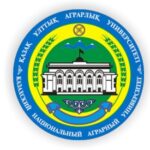 |
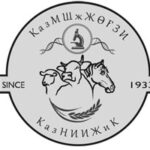 |
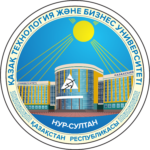 |
 |
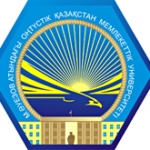 |
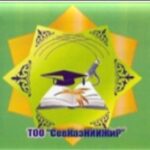 |
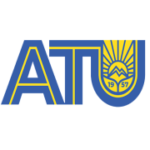 |

